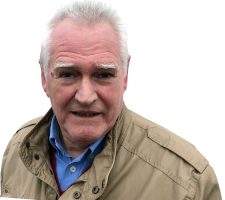search
date/time
 | Yorkshire Times A Voice of the Free Press |

Mike Tilling
Arts Correspondent
5:00 PM 17th July 2020
arts
Filmed Opera: Cavalleria Rusticana – Pietro Mascagni

Franco Zefferelli directing
Director Franco Zefferelli is famous for swirling action and sumptuous colouring, However, the opening scenes of Cavalleria Rusticana are initially set in a gloomy pre-dawn light. Men leave for work observed by Santuzza (Elena Obraztsova) dressed all in black – colours that signify either a widow or any woman over 50 in nineteenth century Sicily. Which is it?
Also by Mike Tilling...
Hannah: The Soldier DiaryClassical Music: Path to the MoonHigh Energy Northanger AbbeyClassical Music: The Music Of Robert Schumann, Clara Schumann, And Johannes BrahmsDo I Love You – John GodberThe immediate cause of her sombre attire is Turridu (a young Placido Domingo, looking devastatingly handsome and singing in his tenor range). He is the cad who has seduced her and brought her to the torment that persists throughout the piece.
As the screen lightens, the people of the village and the surrounding countryside finish their work and come in from the fields. Suddenly, we have the colourful costumes we recognise as a Zefferlli keynote. Santuzza, however, stays in black.
As the action and the music builds, we see the advantage of film over theatre as Zefferrilli stages the climax to Act 1 in a magnificent procession to the aria Regina Caeli Laetare. This is elaborately realised with the villagers processing to the church for an Advent service. Santuzza, however, feels constrained by her sin and stays in a wine shop.
She is so often seen from behind bars, symbolising her isolation. Usually, the bars are balustrades or banisters, but on this occasion, she looks longingly at the congregation through a heavy window frame.
The other very famous piece from the opera is the orchestral Intermezzo that separates Acts 1 and 2. Zefferelli uses it to set the scene for the next part of the same day. Turridu fights a duel with Alfio (Renato Bruson). Turrudo dies on the same patch of land that we saw him cross during the overture.
Perhaps the film works so well because Mascagni gave the opera a unity of time, place and action. The heightened emotions that gives it such intensity on stage may be a little overwrought for the cinema, but this is a magnificent piece of work from a master director.
More in this series...
Filmed Opera: Carmen – Georges Bizet & Francesco Rossi